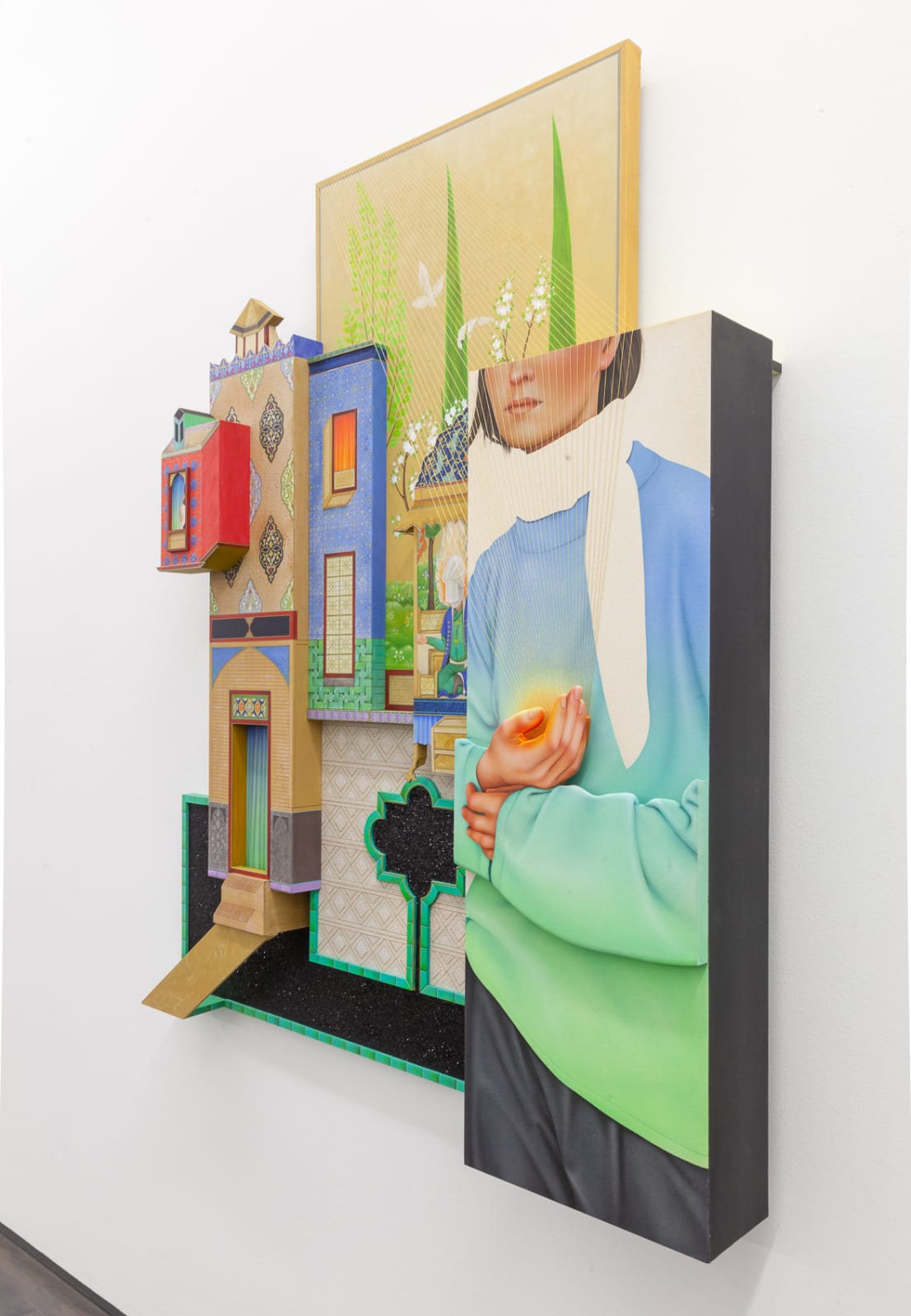Arghavan Khosravi Iranian, b. 1984
155.7 x 129.5 cm
Further images
Though the men here are portrayed in ancient, traditional garb, the women are depicted in contemporary dress. Having lived her whole life under Iran’s post-revolutionary theocratic autocracy, Khosravi is mobilizing her artistic practice to critique how attitudes affecting gender roles are transmitted through visual art.
This painting references a specific Persian miniature painting from history, but Khosravi deploys aesthetic strategies that subvert the tradition to which such images belong. Persian miniatures originally illustrated folkloric texts. Their landscapes were flattened, eliminating any sense of depth, perspective, and scale. Khosravi both uses flatness in her paintings, and rejects it. She uses it by imitating the flattened painting style on some of the individual panels in her works. She then rejects it by building those panels into a multidimensional form that blends an assortment of scales, depths, and perspectives. This combination creates a range of perceptual experiences for the viewer, adding metaphorical significance to the content of the work. For example, in The Witness, the black, tree-like form at the bottom right of the image could be perceived as a garden or pool when viewed from above, but when perceived from straight ahead, it more closely resembles a plume of oil shooting from the ground.




